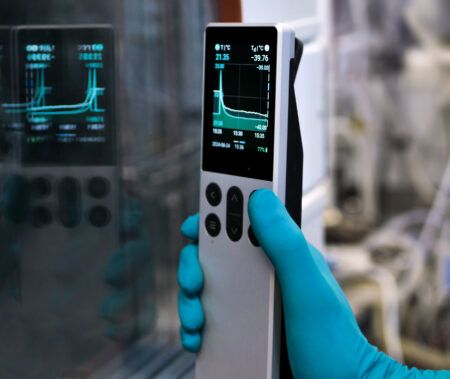Futurist, founder of Future Matters and E&H Vehicle columnist Lars Thomsen explains how he and his team analyze the latest trends in technology, using the data to offer insight for the future.
We are a team that consists of 11 futurists who are working together in a partnership. All of us spend about six hours per day doing research, finding out things that we didn’t know when we woke up in the morning. There’s a lot of curiosity in the team where certain trends and developments in industries are going – we are trying to come up with scenarios that are based on logic. A tipping point is not usually something that comes from nowhere; it usually has a technological logic or economic logic behind it. For example, when you look back at history, there was a time when a typewriter was cheaper than a personal computer – then typewriters didn’t innovate that fast, they were at the end of their innovation cycle, so there were only incremental innovations. The PC, however, was at the beginning of its cycle and was innovating rapidly. There was a tipping point at which it is cheaper to buy a PC than a typewriter and at which it’s more capable. That’s basically what we’re looking for in our research – coming up with enough data to find trends, and not only describing those trends, but coming up with a disruptive logic or tipping point.
It basically takes three different skills. The first is that you have to be curious – I sometimes say you need to be like a child – if you encounter something that you haven’t seen before, you want to know everything about it.
You need industry knowledge, or a deep understanding of the industry that you are currently monitoring. So if you are looking at cars, for example, you need to know how cars are manufactured, and the different parameters that you need to know about in order to build them.
The third thing is that you need to have a knowledge of technology and physics. Often we hear about new ideas and they sound fantastic, but if you take your calculator and try to reason whether or not it would be possible, physics and mathematics help you determine whether or not this is a viable option.
When we are looking at self-driving cars, trucks and vans, for example, we look at how much computing power you need to perform these functions, how do other aspects like regulation and fuel prices affect that. We need open-minded, curious people with industry knowledge with the ability to calculate and recalculate proposals so we can come up with a model.
We differentiate between two types of information. The first is quantitative – trends and numbers which are hard facts. They are usually from the past – there are no hard facts from the future! – and we look at trends that have been documented. For example, how many cars were manufactured last month, last year, how are prices developing in terms of degradation of battery prices, for example.
The second is qualitative data, and that usually comes from interviews and talks with people who are working on innovations and future projects. Those can be entrepreneurs we interview when they have founded a company, scientists working on certain aspects of technology, and so on. Often, we attend conferences on areas such as robotics, for example, to get an idea of who is working on what, what their timeframes are, what hurdles they have to work through. Our 11 partners will do between 300 and 500 interviews every year with experts in a certain field.
It’s also important for people to have the ability to imagine things that are not here yet. That is something that is pretty unique to humans. All progress of technology and society that we’ve seen over the last thousands of years, at one point in time, it was just an idea in someone’s imagination. If 20 years ago, people had said that even our children will have a TV studio in their pocket that they can use to produce high-quality video and distribute it for free to millions of people, that would have sounded crazy. Because they didn’t allow themselves to be that creative. We talk to people about something like self-driving cars and often the first reaction we get is: no, it cannot be. People like to drive. What if there is a system failure, or it is hacked? But they don’t even allow themselves to imagine a scenario where it might be even better to have such a convenient form of transportation.
Steve Jobs once said, ‘Here’s to the crazy ones.’ The people who are crazy enough to think that they can change the world are the ones who do. And you sometimes have to be a little bit crazy to think of something that is not here yet.





